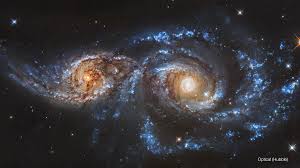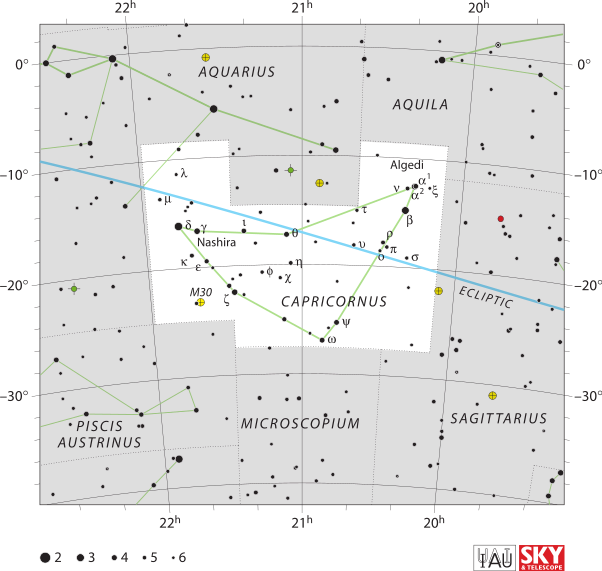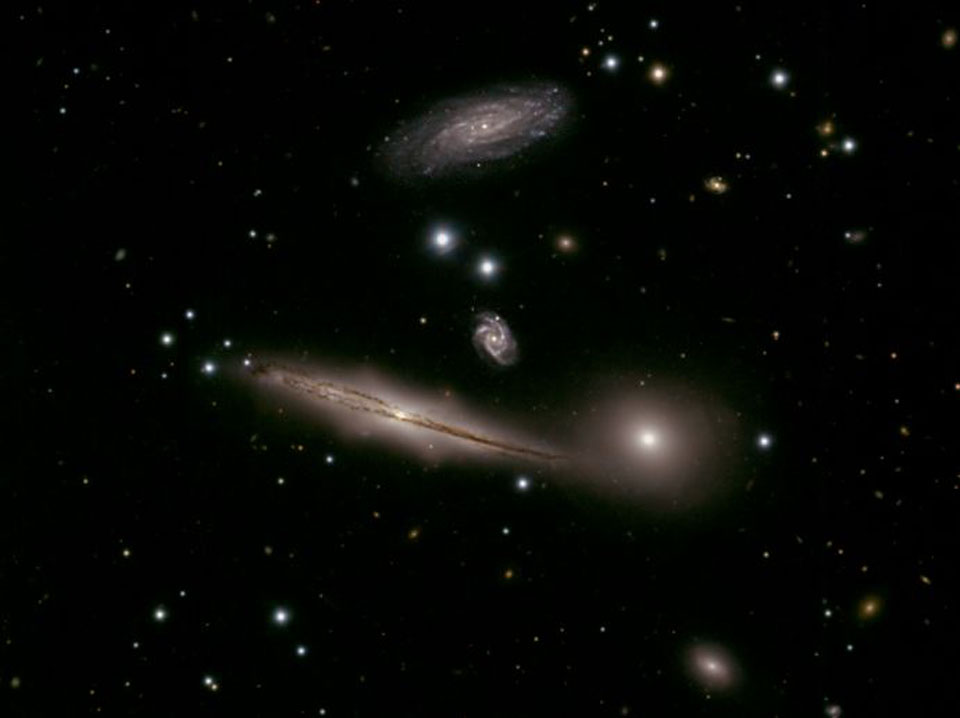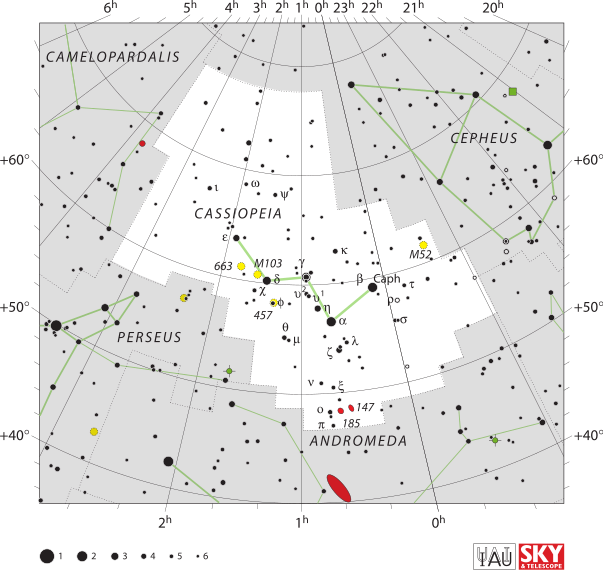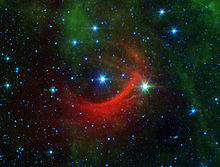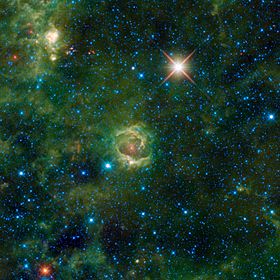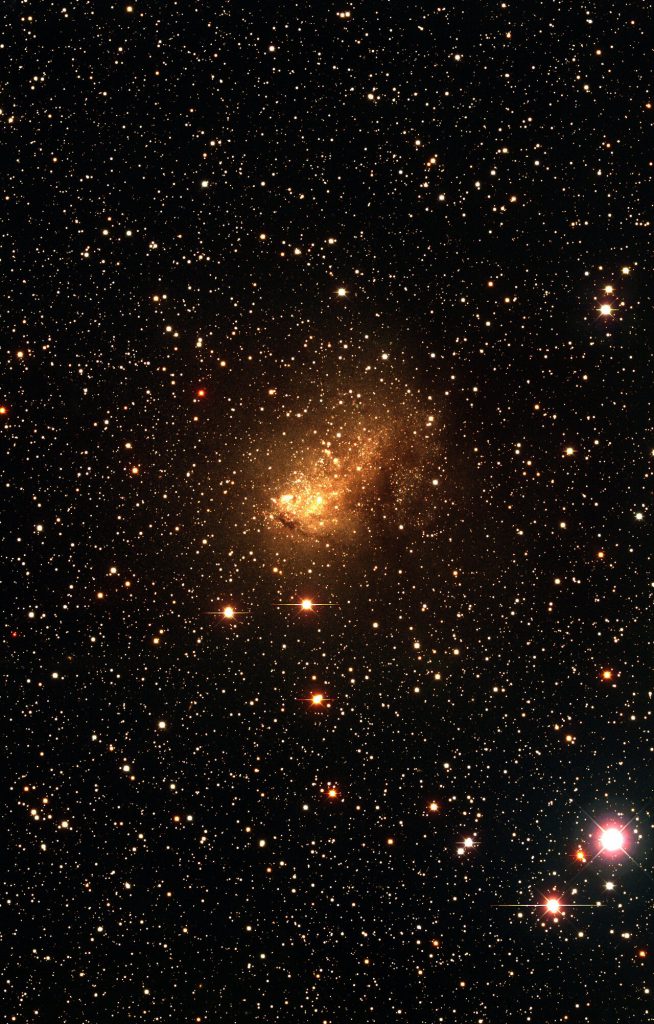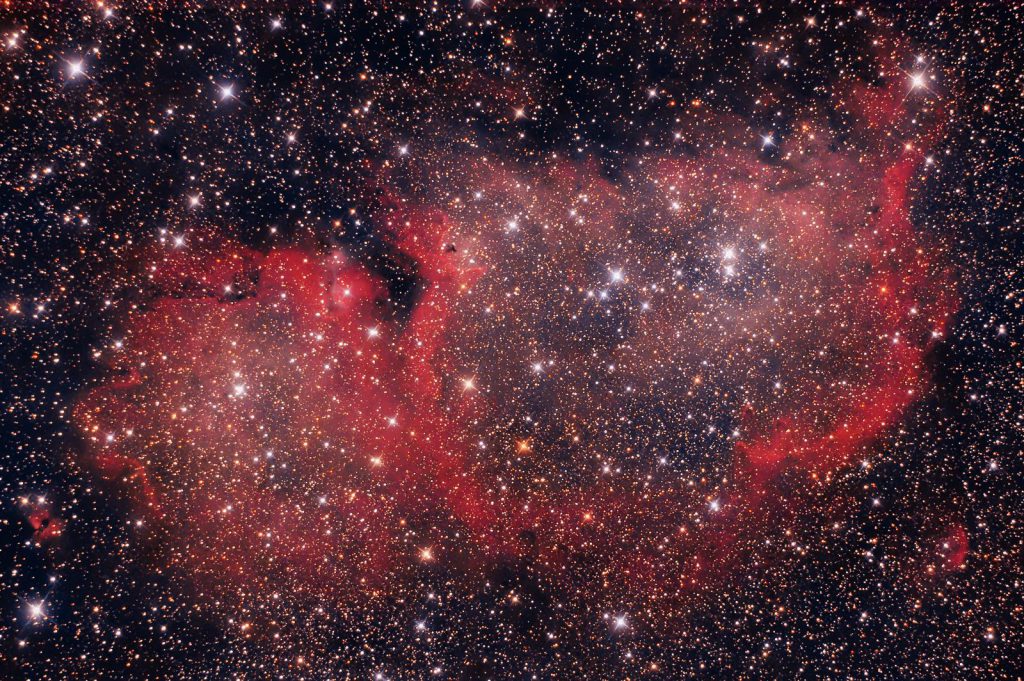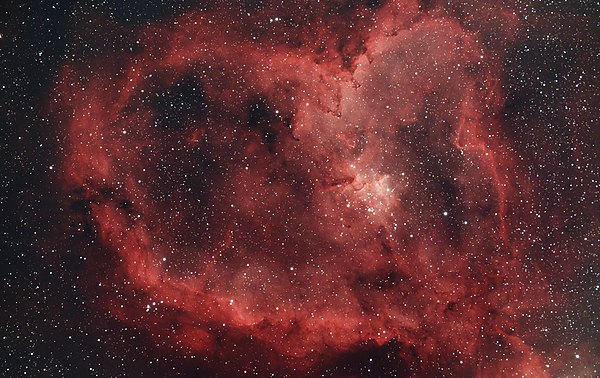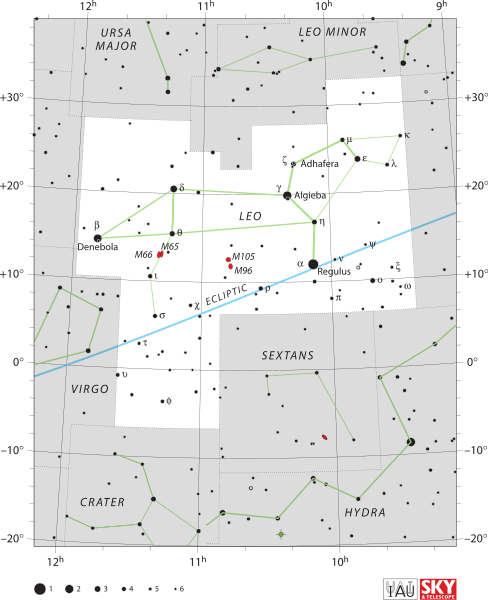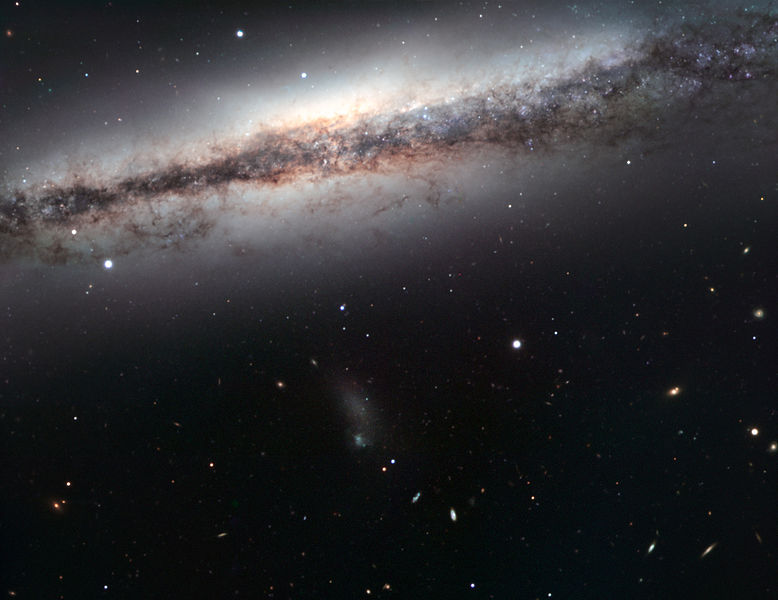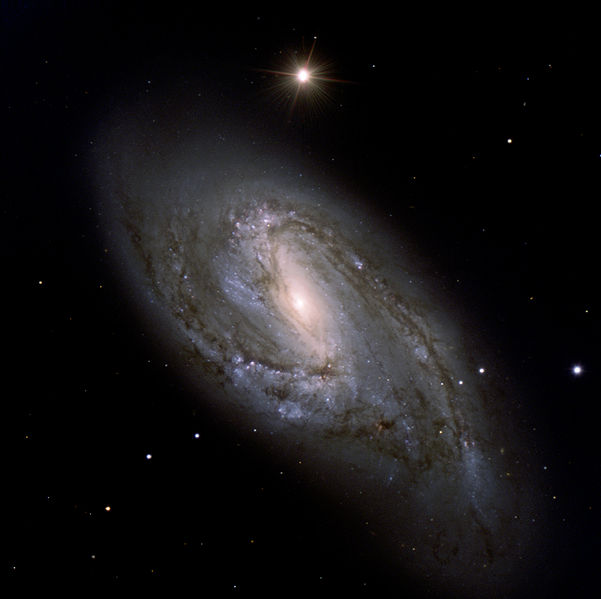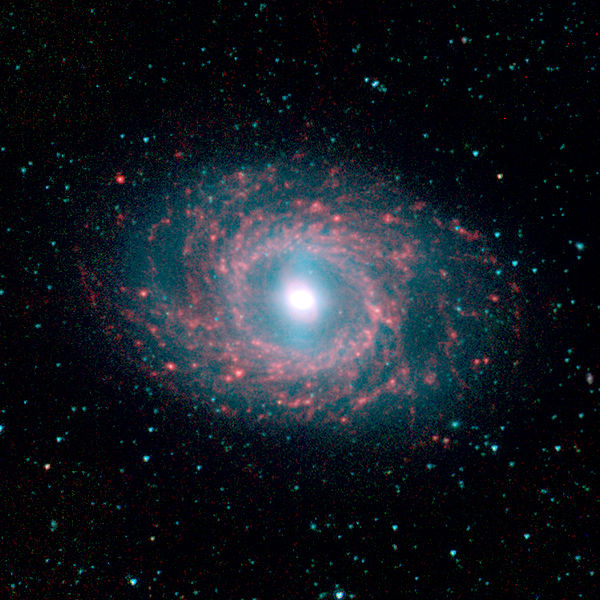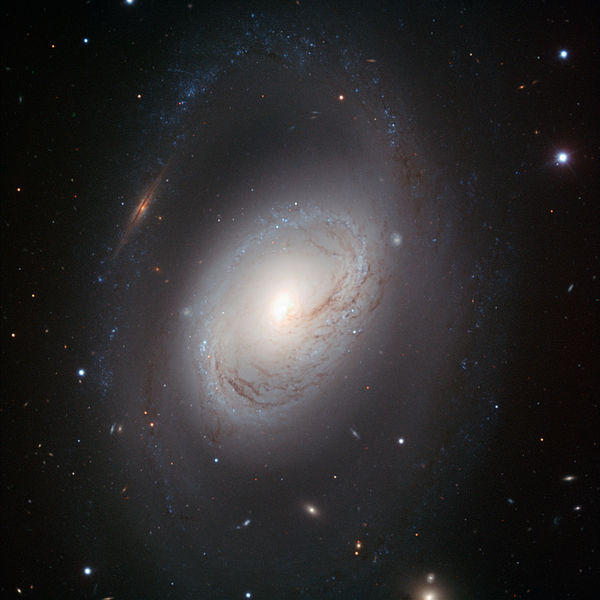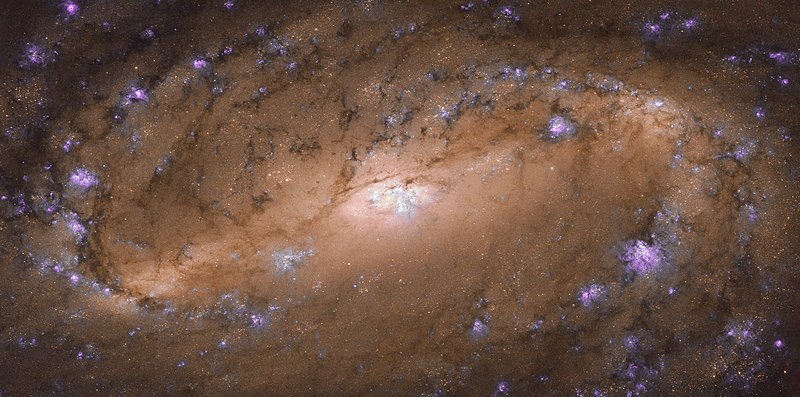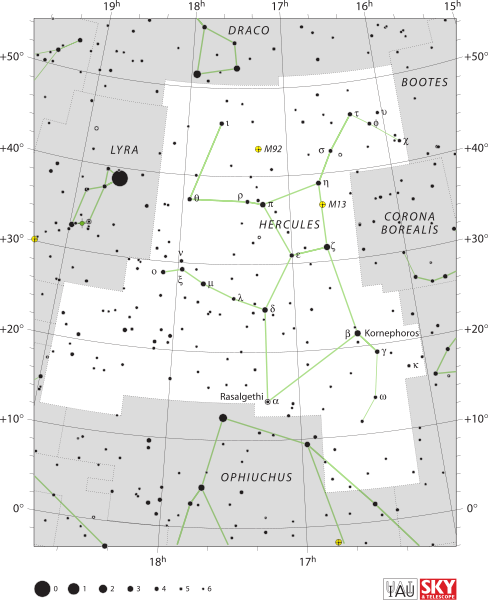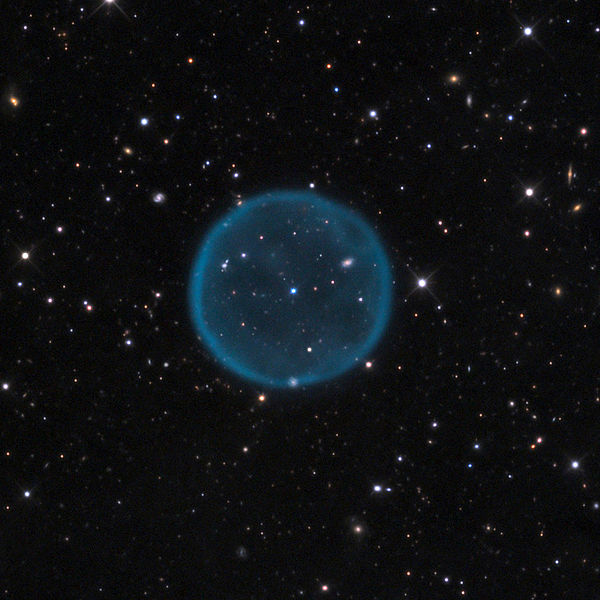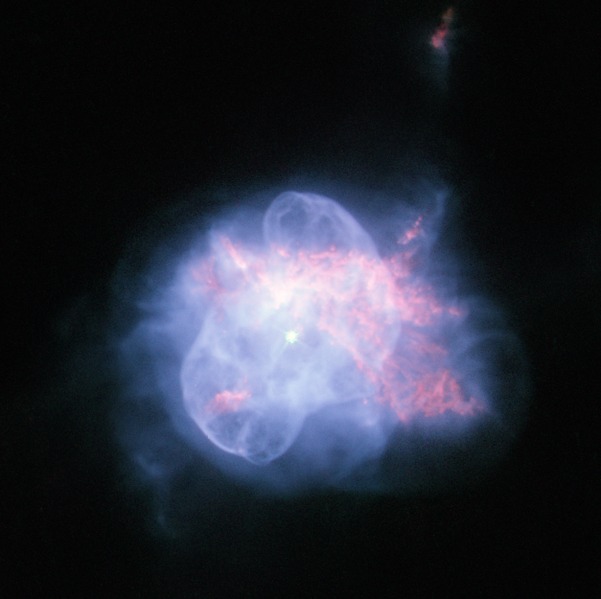Canis Major was first cataloged in Ptolemy‘s list of 48 constellations and still makes the list among the modern 88 constellations. Canis Major means ‘Greater Dog’ in Latin. From the major features of this constellation is containing the brightest star in the night sky, Sirius. This star is very bright as it is very close to the solar system, the other stars in Canis Major are more luminous but they are much further. Epsilon Canis Majoris (Adhara) is the second-brightest star of the constellation; the third is a yellow-white supergiant Delta (Wezen); the forth is a blue-white giant called Beta (Mirzam); then there are the blue-white supergiants Eta (Aludra), Omicron2, and the white spectroscopic binary Zeta (Furud). One of the largest known stars so far, red hypergiant VY Canis Majoris is also located in Canis Major. There are also plenty of variable stars in Canis Major. EZ Canis Majoris is a Wolf–Rayet star, and we still do not know the cause of its variability. W Canis Majoris is a variable, carbon star and is a red giant. Tau Canis Majoris contains two stars orbiting each other and blocking one another’s light thus they are categorized as variable stars (their magnitudes differ in different periods). This particular feature qualifies this star as a Beta Lyrae-type eclipsing multiple star system. UW Canis Majoris has the exact same features, it is also a Beta Lyrae-type eclipsing multiple star system. R Canis Majoris can be categorized the same, with a companion lying further from the central binary system.
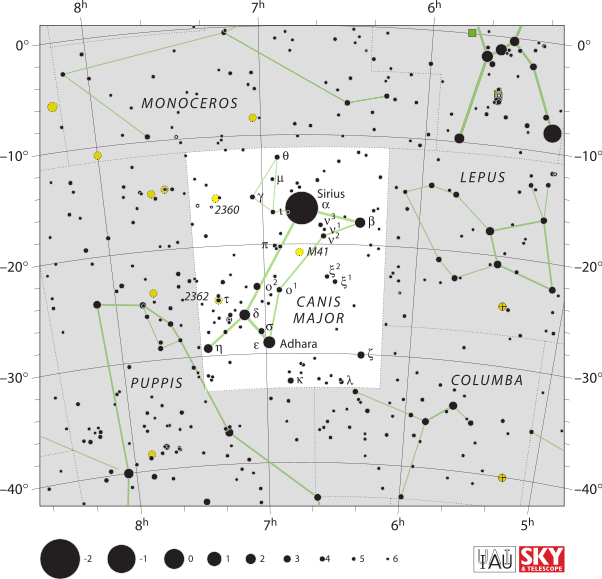
There are also stars which host planets in this constellation. Nu2 Canis Majoris (an ageing orange giant) is orbited by a planet (2.6 Jupiter masses). HD 47536 is another ageing orange giant orbited by a single planet. HD 45364 (G8 type star, cooler than our Sun with spectral type G0V) hosts two planets. HD 47186 is another sunlike star hosting two planets. HD 43197 is another sunlike star with a Jupiter-size planet orbiting it in eccentric orbits. Z Canis Majoris consists of two pre-main-sequence stars (young stars). This is a particular stellar system as one of its components is a FU Orionis star (stars that change significantly in spectral type and magnitude) and the other is a Herbig Ae/Be star (young stars with ages less than 10 Myr and of spectral type of A or B). The Herbig star is enveloped in a cocoon-like dust shell and its light shines through this cocoon. The in-falling material that formed the whole system is still surrounding the stellar system.
As deep-sky objects, Canis Major contains plenty of open clusters: M41 (NGC 2287), 12 Canis Majoris, NGC 2360, NGC 2362, NGC 2354. NGC 2359 (Thor’s Helmet or the Duck Nebula) is a beautiful emission nebula lying 10,000 light-years from Earth. This nebula is shaped by WR 7 (HD 56925) which is a Wolf–Rayet star and is located at the heart of the nebula. The Canis Major Dwarf galaxy is the closest satellite galaxy to Earth and its name suggests that it is affiliated with Canis Major constellation. The origins of this galaxy are still under debate.
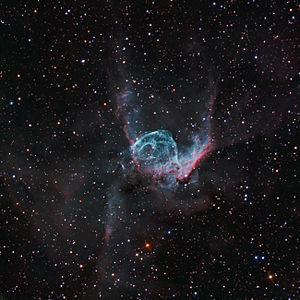
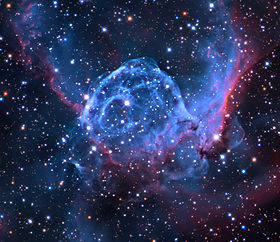
NGC 2207 and IC 2163 are a pair of interacting spiral galaxies lying 125 million light-years from Earth. IC 2163 is the smaller component and it is hypothesized to be merged into NGC 2207 eventually.
